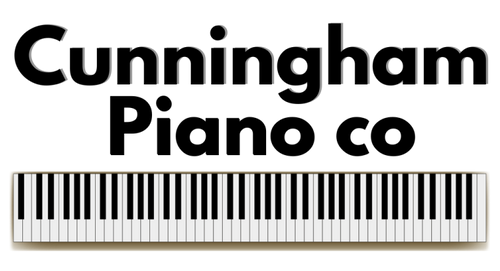Ask a classically trained pianist what kind of piano they would prefer to practice on, and we would bet real money that the answer would be, “an acoustic grand piano”. But what if there was a world-class pianist that actually touted the benefits of practicing on a digital piano over an acoustic one? Sacrilege? Before you dismiss the possibility outright, check out these four digital piano practice tips, specifically designed to benefit serious classical pianists by one of the finest of our time, Frederic Chiu. “I came up with these tips a little bit out of desperation,” Frederic said. “I was in a place where I couldn’t have a normal piano and I got myself a digital piano, the old GrandTouch by Yamaha, and I loved practicing on it so much, I actually practiced on it exclusively for more than 10 years and I developed these techniques during that time.”
Practice Tip #1: Dummy Keyboard
Practicing with the sound completely off means that you’re practicing on a dummy keyboard and this was something that 18th century, 19th century pianists would practice on. It allows you to disassociate the emotions of the music from the emotions of practicing, technically. You can be much more mindful of how the fingers are moving, of how it feels, without having to deal with the actual sound distracting you.
Practice Tip #2: Low Volume Practicing
This one I call low volume practicing and that’s what it is. You turn the volume on but it’s very low. This actually is very different than silent keyboard because when you hear a little bit of the sound you’re encouraged to just push a little more to get a little more volume and that actually helps you build muscles, so it allows you to play louder without actually having loud sound coming into your head.
Practice Tip #3: Left Brain/Right Brain Practicing
This is a tip for digital pianos that have headphones and you practice with the headphone on either the left ear only or the right ear only. You do this over a period of a few days exclusively with the left ear for example, and you start enhancing left-brain thinking, which is about precision, about rhythms, about accuracy. Then you switch over to the right headphone and just encourage a little bit of those right-brain activities. You start thinking about color, you start thinking about interpretation. You start thinking about associating ideas that come from the outside into your piano playing. It’s very evocative. You have to do this over the period of a few days because not all of the nerves from the ears go directly into the hemispheres, some of them go to the base of the brain and so it’s not like a pure experience, so it takes a few days to get the effect going.
Practice Tip #4: Stress-Free Practicing
Practicing on a digital piano means that you’re using headphones, which means nobody else can hear you practice. That’s really important, especially for people who are in the phase of learning a piece and just hacking around, making lots of mistakes. Or if you’re in a phase where you’re just repeating things over and over again. As pianists, we generally don’t get bothered by that but a non pianist, hearing that thing going over and over, it’s emotionally draining. So it’s great for the pianist to know that they can do that kind of work without irritating everybody else around them. You can also practice at night. It’s a great way to just feel free to practice whenever the mood hits you; practicing whenever you want. So those are my tips for classical pianist to practice on a digital piano. Some of them are actually better than practicing on a normal piano. So I recommend this to everybody. I hope you try them. — Frederic Chiu

